Sur Lie Aging in Winemaking Explained [Ultimate Guide]
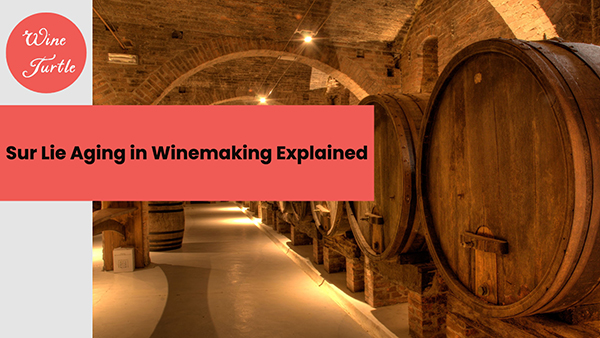
Winemaking is an intricate process that involves a variety of techniques and methods to produce a high-quality product.
One such technique that has gained popularity in recent years is sur lie aging.
Sur lie aging is a process where wine is left to age on its lees, which are the dead yeast cells and other sediment that settle at the bottom of the barrel or tank after fermentation.
What is Sur Lie Aging?
Sur lie aging is a technique that involves leaving wine in contact with its lees for an extended period of time.
"Sur lie", translated from French, means "on the lees", where "lees" refers to the residual yeast and other particles that precipitate, or are carried by the action of "fining", to the bottom of the vat after fermentation and aging.
The sur lie aging process can last anywhere from a few weeks to several months, depending on the winemaker's preference.
During this time, the wine absorbs the flavors and aromas of the lees, which can add complexity and depth to the finished product.
The technique is particularly effective for white wines, as it can impart a creamy texture and enhance the wine's fruitiness and minerality.
Sur lie aging is commonly used in the production of white wines, such as Chardonnay, Sauvignon Blanc, and Chenin Blanc.
However, it can also be used in the production of red wines, such as Pinot Noir, Syrah, and Cabernet Franc, as well as sparkling wines, such as Champagne, Cava, and Prosecco, and fortified wines, such as Port, Sherry, and Madeira.
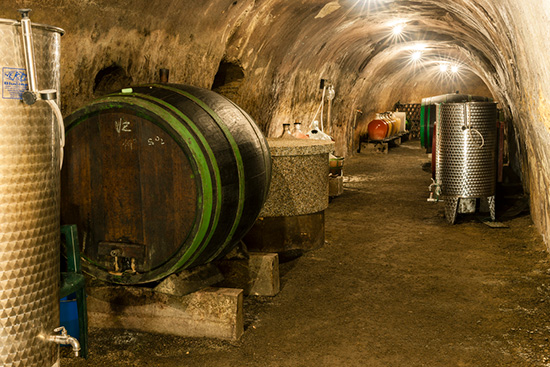
The Benefits of Sur Lie Aging in Winemaking
Sur lie aging is an important technique in winemaking because it can enhance the flavor, aroma, and texture of the finished product.
The lees contain compounds that can contribute to the wine's flavor profile, including amino acids, fatty acids, and polysaccharides.
These compounds can add richness and creaminess to the wine, as well as enhance its fruitiness and minerality.
Additionally, sur lie aging can help to stabilize the wine and protect it from oxidation.
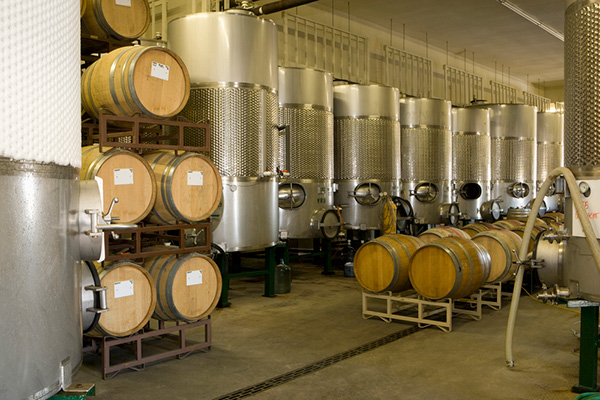
Brief History of Sur Lie Aging
The lees, in their very essence, are the sediment left after fermentation, and their handling goes back thousands of years.
Ancient Greeks and Romans were likely to have observed that wines kept in amphorae with their sediment evolved differently, though their understanding of the process would have been far from our modern scientific grasp.
Fast forward to the Middle Ages, and we find winemaking becoming more of a science, albeit one guided by observation and tradition rather than microscopes and chemistry.
The Cistercian monks, those industrious vintners of the monastic world, are credited with many innovations in viticulture and vinification, and it's conceivable they experimented with lees contact.
The story becomes clearer in the 17th century, especially in the region of Champagne, France. The cool climate of Champagne caused wines to prematurely halt fermentation during the cold winter months, leaving residual sugar and dormant yeast.
Come spring, warmer temperatures revived the yeast, causing a secondary fermentation that left behind carbon dioxide, creating a sparkling wine. Early Champagne was notoriously cloudy due to the presence of these spent yeast cells.
It wasn't until the 19th century when Madame Clicquot, of the Veuve Clicquot Champagne house, along with her cellar master, developed the riddling process to remove the dead yeast cells, leading to the clear, sparkling wine we know today.
But they also noticed something intriguing – the prolonged contact with lees led to unique flavors, a discovery that would fundamentally change the style of Champagne and many other wines.
In the Loire Valley, Muscadet, a light white wine made from the Melon de Bourgogne grape, has also been traditionally aged on its lees, known as 'Muscadet Sur Lie.'
This technique gives these otherwise light and neutral wines a complexity and creaminess that has become synonymous with the style.
Now, sur lie aging is utilized worldwide, from the Chardonnays of Burgundy and California to the Chenin Blancs of South Africa.
It's a testament to the enduring curiosity of winemakers, their deep observation and understanding of the intricacies of wine, and their willingness to let nature, in all its messy glory, take the reins now and again.
And aren't we all the better for it?
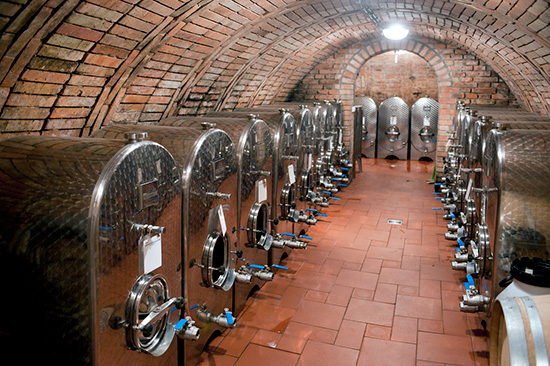
The Science Behind Sur Lie Aging
Sur lie aging is a complex process that involves a variety of chemical reactions and interactions between the wine and the yeast and lees present in the aging vessel.
These reactions are responsible for the unique flavor and aroma profile of sur lie aged wines.
Chemical Reactions During Sur Lie Aging
The yeast's role doesn't end with fermentation. Dead yeast cells, or autolysed yeast, are integral to the sur lie process.
As the yeast cells break down, a process known as autolysis, they release several compounds including polysaccharides, proteins, amino acids, and mannoproteins.
These compounds contribute to the mouthfeel and flavor of the wine, adding richness, body, and complexity. They also have antioxidant properties, which can help protect the wine from oxidation and enhance its aging potential.
Role of Lees in Sur Lie Aging
The lees play a crucial role in sur lie aging. Not only do they release beneficial compounds as they break down, but they also absorb unwanted flavors and aromas, helping to stabilize the wine.
Moreover, the lees provide a reductive environment, which can protect the wine from oxidation.
Some winemakers also periodically stir the lees, a process known as 'bâtonnage', which increases the wine's contact with the lees and can accelerate the autolysis process.
How Sur Lie Aging Affects Wine Flavor and Aroma
Sur lie aging has a profound effect on the flavor and aroma profile of the wine. It can contribute flavors of bread dough, toast, and nuts, and enhance the wine's texture, giving it a creamy, round, and full-bodied mouthfeel.
Furthermore, the process can add complexity and depth to the wine, and improve its aging potential. Wines aged sur lie often have a characteristic richness and complexity, with a smoother, more integrated profile than wines that have not undergone the process.
So, from the first careful steps of fermentation to the delicate dance of sur lie aging, the winemaker uses science, skill, and a bit of magic to craft a wine that is more than the sum of its parts, a testament to the beauty of transformation and time.
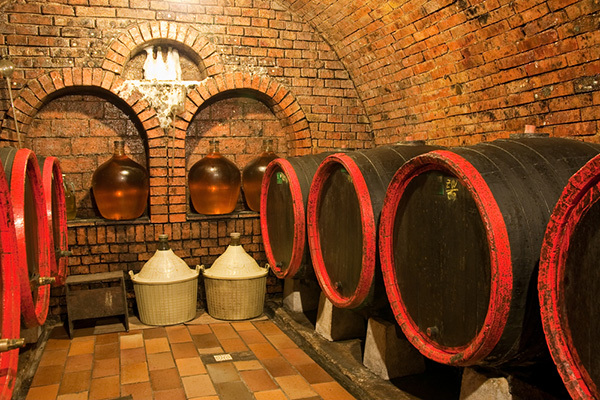
Sur Lie Aging Techniques and Practices
While traditional methods such as barrel and tank aging are still used today, modern techniques such as the use of oak alternatives and stainless steel tanks have emerged that allow winemakers to achieve the same benefits in a more efficient and controlled manner.
Traditional Sur Lie Aging Techniques
1. Barrel aging
Barrel aging is one of the oldest and most traditional methods of sur lie aging. The wine is aged in oak barrels, which allows for a slow and controlled release of oxygen into the wine. This process helps to develop the wine's flavor, aroma, and texture.
Barrel aging can be done in new or used oak barrels, and the type of oak used can also impact the wine's flavor.
French oak is known for imparting subtle flavors of vanilla, spice, and toast, while American oak is known for its more pronounced flavors of coconut, dill, and caramel.
Modern Sur Lie Aging Techniques
1. Use of oak alternatives
In recent years, winemakers have started using oak alternatives such as oak chips, staves, and barrels. These alternatives allow winemakers to achieve the same flavor and aroma benefits of oak aging without the high cost and long aging times.
Oak alternatives can be added to the wine during fermentation or aging, and the amount used can be adjusted to achieve the desired flavor profile.
2. Use of stainless steel tanks
Stainless steel tanks are becoming increasingly popular for sur lie aging, as they offer a more precise and controlled environment than oak barrels.
The tanks can be temperature-controlled, and the wine can be stirred regularly to keep the lees in suspension.
Stainless steel tanks are often used for white wines, as they allow for a more neutral flavor profile that lets the wine's fruit and acidity shine through.
Factors That Affect Sur Lie Aging
1. Temperature
Temperature plays a crucial role in sur lie aging, as it can impact the rate of chemical reactions that occur in the wine.
Winemakers must monitor the temperature of the wine during sur lie aging to ensure that it stays within the optimal range for the desired flavor profile.
2. Oxygen exposure
Oxygen exposure is another important factor in sur lie aging. Controlled exposure to oxygen can help to develop the wine's flavor and aroma, while too much exposure can cause the wine to oxidize and spoil.
Winemakers must carefully manage the amount of oxygen that the wine is exposed to during sur lie aging to achieve the desired results.
3. Stirring frequency
Stirring, or "batonnage," is the process of agitating the lees in the wine to keep them in suspension.
This process can help to develop the wine's flavor, aroma, and texture. The frequency of stirring can impact the wine's flavor profile, with more frequent stirring resulting in a creamier texture and more pronounced lees flavors.
Best Practices For Sur Lie Aging
1. Monitoring lees and wine
Winemakers must monitor the wine and lees throughout the sur lie aging process to ensure that the wine is developing properly and that there are no off-flavors or aromas.
2. Proper cleaning and sanitation
Proper cleaning and sanitation of equipment and barrels is crucial to prevent contamination and spoilage of the wine.
3. Timely racking
Racking, or transferring the wine from one vessel to another, is an important step in sur lie aging. Timely racking can help to separate the wine from the lees and prevent off-flavors and aromas from developing.
In conclusion, sur lie aging is a traditional winemaking technique that has been used for centuries to enhance the flavor, aroma, and texture of wine.
Proper management of factors such as temperature, oxygen exposure, and stirring frequency, as well as best practices such as monitoring the wine and lees, proper cleaning and sanitation, and timely racking, are crucial to achieving the desired flavor profile in sur lie aged wines.
Winemakers can choose between traditional and modern sur lie aging techniques depending on their desired flavor profile and production goals.
Sur Lie Aging and Wine Regions
Sur lie aging is particularly associated with certain wine regions around the world.
These regions have developed their own unique approaches which are influenced by factors such as grape variety, climate, and winemaking traditions.
Understanding these regional differences can provide valuable insights into the art and science of sur lie aging.
1. Loire Valley, France
The Loire Valley in France is perhaps the most famous region for sur lie aging.
This region is known for producing crisp, mineral-driven white wines such as Muscadet, which are aged on their lees for extended periods of time.
The traditional method of sur lie aging in the Loire involves aging the wine in large, underground vats known as "foudres."
These vats are made of oak or chestnut and can hold up to 1000 liters of wine. The cool, damp conditions in the wine cellars of the Loire Valley are ideal for sur lie aging, as they help to slow down the aging process and allow the wine to develop complex flavors and aromas over time.
2. Rías Baixas, Spain
In Spain's Rías Baixas region, sur lie aging is used to produce crisp, aromatic white wines made from the Albariño grape.
The wines of Rías Baixas are known for their bright acidity and intense fruit flavors, which are enhanced by sur lie aging.
The traditional method of sur lie aging in this region involves aging the wine in stainless steel tanks for several months, with regular stirring of the lees to impart flavor and texture to the wine.
The cool, damp climate of Rías Baixas is similar to that of the Loire Valley, which makes it an ideal region for sur lie aging.
3. Marlborough, New Zealand
Marlborough is New Zealand's most famous wine region, and it is known for producing world-class Sauvignon Blanc wines that are aged on their lees.
The wines of Marlborough are characterized by their intense fruit flavors and crisp, refreshing acidity, which are enhanced by sur lie aging.
The traditional method of sur lie aging in Marlborough involves aging the wine in stainless steel tanks for several months, with regular stirring of the lees to impart flavor and texture to the wine.
The warm, sunny climate of Marlborough is ideal for sur lie aging, as it helps to promote the development of complex flavors and aromas in the wine.
4. Willamette Valley, Oregon
The Willamette Valley in Oregon is known for producing some of the world's finest Pinot Noir wines, many of which are aged on their lees.
The wines of the Willamette Valley are characterized by their delicate fruit flavors and silky tannins, which are enhanced by sur lie aging.
The traditional method of sur lie aging in this region involves aging the wine in French oak barrels for several months, with regular stirring of the lees to impart flavor and texture to the wine.
The cool, damp climate of the Willamette Valley is similar to that of the Loire Valley, which makes it an ideal region for sur lie aging.
Differences in Sur Lie Aging Practices Across Regions
While sur lie aging is a technique that is used in many wine regions around the world, there are significant differences in the way that it is practiced in each region.
These differences are influenced by factors such as grape variety, climate, and winemaking traditions, and they can have a significant impact on the flavor, aroma, and texture of the wine.
1. Grape varieties
Different grape varieties respond differently to sur lie aging, which means that the technique is used in different ways depending on the grape variety.
For example, sur lie aging is commonly used in the production of white wines made from Chardonnay, Sauvignon Blanc, and Chenin Blanc, but it is less commonly used in the production of red wines.
This is because red wines typically have more tannins and structure than white wines, which means that they do not benefit as much from sur lie aging.
2. Climate
The climate of a wine region can have a significant impact on the way that sur lie aging is practiced.
Regions with cool, damp climates such as the Loire Valley and the Willamette Valley are ideal for sur lie aging, as they help to slow down the aging process and allow the wine to develop complex flavors and aromas over time.
Regions with warmer, sunnier climates such as Marlborough and Rías Baixas can also be ideal for sur lie aging, as they help to promote the development of fruit flavors and aromas in the wine.
3. Winemaking traditions
Winemaking traditions can also influence the way that sur lie aging is practiced in different regions.
For example, in the Loire Valley, the traditional method of sur lie aging involves aging the wine in large, underground vats known as "foudres," while in Rías Baixas, the traditional method involves aging the wine in stainless steel tanks.
These different approaches can have a significant impact on the flavor, aroma, and texture of the wine, and they reflect the unique winemaking traditions of each region.
Sur Lie Aging and Wine Styles
This process can be applied to a wide variety of wines, including white, red, sparkling, and fortified wines.
Each wine style undergoes a unique sur lie aging process, resulting in distinct flavor profiles and characteristics.
Sur Lie Aging and White Wines
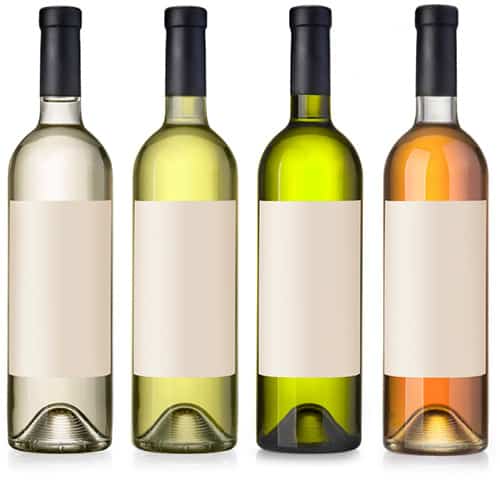
1. Chardonnay
Chardonnay is one of the most popular white wines that undergo sur lie aging. The process enhances the wine's creamy texture and adds complexity to its flavor profile.
Sur lie aged Chardonnay often exhibits notes of butter, vanilla, and toast, along with a hint of minerality.
2. Sauvignon Blanc
Sur lie aging can also be applied to Sauvignon Blanc, a crisp and acidic white wine. The process softens the wine's acidity and adds a creamy texture to its mouthfeel.
Sur lie aged Sauvignon Blanc often exhibits notes of tropical fruit, citrus, and herbs, along with a subtle nuttiness.
3. Chenin Blanc
Chenin Blanc is another white wine that benefits from sur lie aging. The process adds depth and complexity to the wine's flavor profile, while also enhancing its natural acidity.
Sur lie aged Chenin Blanc often exhibits notes of honey, quince, and apricot, along with a hint of nuttiness.
Sur Lie Aging and Red Wines
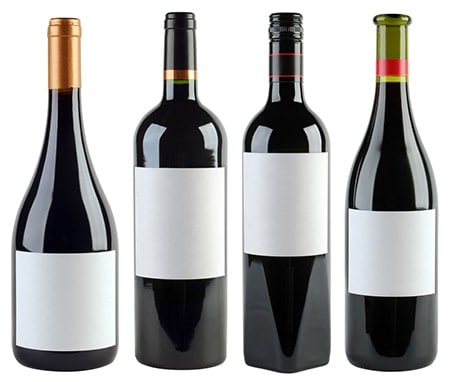
Full-bodied refs can also benefit from this process as it contributes to the mouthfeel and stabilizes the color.
Mannoproteins that are released during the process have the effect of adding a denser mouthfeel and boosting aromas, but key to red wines, they bind to tannins so they can help reduce astringency caused by tannic reds.
1. Pinot Noir
Sur lie aging can also be applied to red wines, such as Pinot Noir. The process adds complexity and depth to the wine's flavor profile, while also softening its tannins.
Sur lie aged Pinot Noir often exhibits notes of red fruit, earth, and spice, along with a subtle smokiness.
2. Syrah
Syrah is another red wine that benefits from sur lie aging. The process enhances the wine's structure and adds complexity to its flavor profile.
Sur lie aged Syrah often exhibits notes of black fruit, pepper, and smoke, along with a hint of chocolate.
3. Cabernet Franc
Cabernet Franc is a red wine that is often sur lie aged to enhance its natural herbaceousness and add complexity to its flavor profile.
Sur lie aged Cabernet Franc often exhibits notes of red fruit, green pepper, and tobacco, along with a subtle earthiness.
Sur Lie Aging and Sparkling Wines
1. Champagne
Sur lie aging is a crucial step in the production of Champagne, a sparkling wine from the Champagne region of France.
The process adds complexity and depth to the wine's flavor profile, while also enhancing its effervescence.
Sur lie aged Champagne often exhibits notes of toast, brioche, and nuts, along with a hint of citrus.
2. Cava
Cava, a sparkling wine from Spain, is also often sur lie aged. The process adds creaminess to the wine's mouthfeel and enhances its natural acidity. Sur lie aged Cava often exhibits notes of apple, pear, and nuts, along with a subtle minerality.
3. Prosecco
Prosecco, a sparkling wine from Italy, can also undergo sur lie aging to enhance its flavor profile.. Sur lie aged Prosecco often exhibits notes of peach, apricot, and almond, along with a hint of floral aromas.
Sur Lie Aging and Fortified Wines
1. Port
Port, a fortified wine from Portugal, can also undergo sur lie aging to enhance its flavor profile.
The process adds complexity and depth to the wine's flavor profile, while also enhancing its natural sweetness.
Sur lie aged Port often exhibits notes of dried fruit, nuts, and caramel, along with a hint of spice.
2. Sherry
Sherry, a fortified wine from Spain, can also benefit from sur lie aging. The process adds complexity and depth to the wine's flavor profile, while also enhancing its natural nuttiness.
Sur lie aged Sherry often exhibits notes of almonds, hazelnuts, and caramel, along with a hint of brininess.
3. Madeira
Madeira, a fortified wine from Portugal, can also undergo sur lie aging to enhance its flavor profile.
The process adds complexity and depth to the wine's flavor profile, while also enhancing its natural sweetness. Sur lie aged Madeira often exhibits notes of dried fruit, nuts, and caramel, along with a hint of smokiness.
